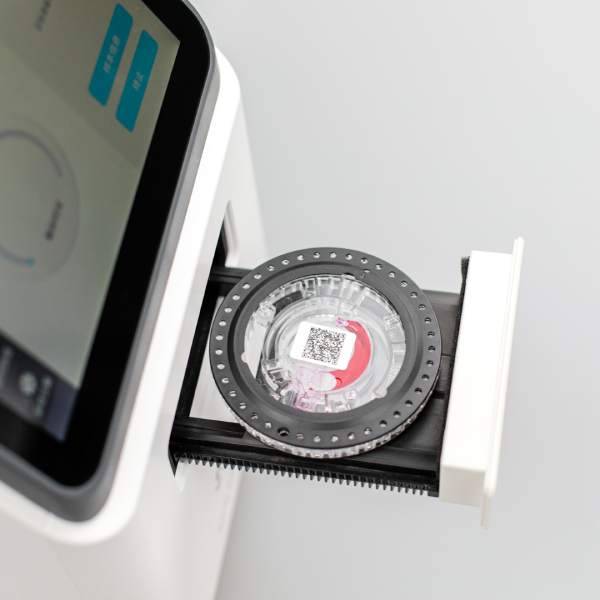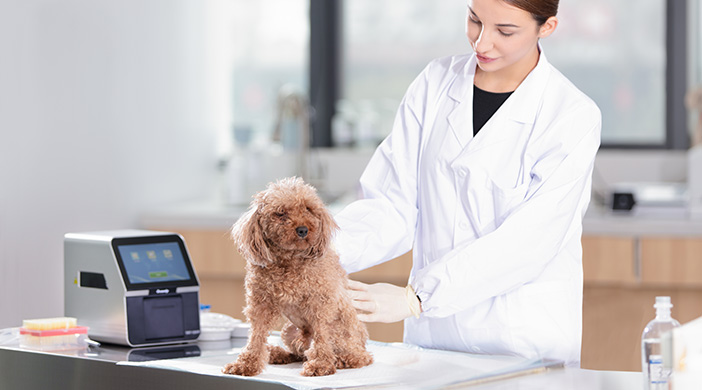Biochemistry analyzers, belong to the category of clinical diagnostic analyzers. Biochemistry analyzer is a test device used to test human liver function, kidney function, blood glucose, blood lipids, cardiac enzymes and ions and other testing items. Biochemistry analyzers generally use venous blood as the test sample to determine potential human diseases through the testing of the above items.

The first generation of biochemical analyzers - spectrophotometer
The first generation of biochemical analyzer is the spectrophotometer. This type of biochemical analyzer uses ultraviolet, visible, infrared and laser light to measure the absorption spectrum of a substance. This absorption spectrum is then used to perform qualitative and quantitative analysis of substances and analysis of the structure of substances.
Advantages of spectrophotometer
① Direct reading of absorbance;
②Simple operation;
③ Reagents are cheap.
Disadvantages of spectrophotometer
① can not directly calculate the concentration value;
②High error;
③Many items cannot be measured.
The second generation of biochemical analyzer - semi-automatic biochemical analyzer
The second generation of biochemical analyzer is semi-automatic biochemical analyzer. Semi-automatic biochemical analyzer in the analysis process of part of the operation (such as adding samples, holding, inhalation colorimetric, results record and so on a certain step) to be completed manually. While another part of the operation can be done automatically by the biochemistry analyzer.
Semi-automatic biochemical analyzer is characterized by small size, simple structure, flexibility, can be used separately and separately, and can be used with other instruments, cheap.
Advantages of semi-automatic biochemical analyzer
①The content of the measurement items can be calculated directly, eliminating manual;
② can monitor the absorbance change of the measured substance in real time, and can determine the enzyme method.
Disadvantages of semi-automatic biochemical analyzer
Need to manually add samples, incubate specimens outside the machine error.
The third generation of biochemical analyzer - fully automatic biochemical analyzer
The third generation of biochemical analyzer is fully automatic biochemical analyzer. Fully automatic biochemical analyzer from the sample to the results of the whole process is completely automated by the instrument. The operator only needs to put the sample on the specific position of the biochemical analyzer and choose the program to start the instrument to take the test report.
Since Technicon successfully produced the world's first fully automated biochemistry analyzer in 1957, the operator has been able to use a variety of models and functions. Various models and functions of fully automated biochemistry analyzers have been emerging. This was a very important step towards the automation of clinical biochemical tests in hospitals.
Biochemistry analyzer as the most basic diagnostic and analytical instruments in medical laboratory departments of hospitals at all levels, from research and development to the present, has gone through three stages: spectrophotometer, semi-automatic biochemistry analyzer and fully automatic biochemistry analyzer.
The working principle of biochemistry analyzer has also developed from manual operation to automated analysis, and from limited routine testing to comprehensive analysis and testing of each system.
With the increasing maturity of electronic computer functions, the fully automatic biochemical analyzer is developing in the direction of openness, rationalization, automation, intelligence, combination, network and chemistry.
The Seamaty SD1 Biochemistry Analyzer, SMT-120 Biochemistry Analyzer is easy to operate, low cost and small in size. Chengdu Seamaty is the preferred choice in more than 80 countries worldwide.



